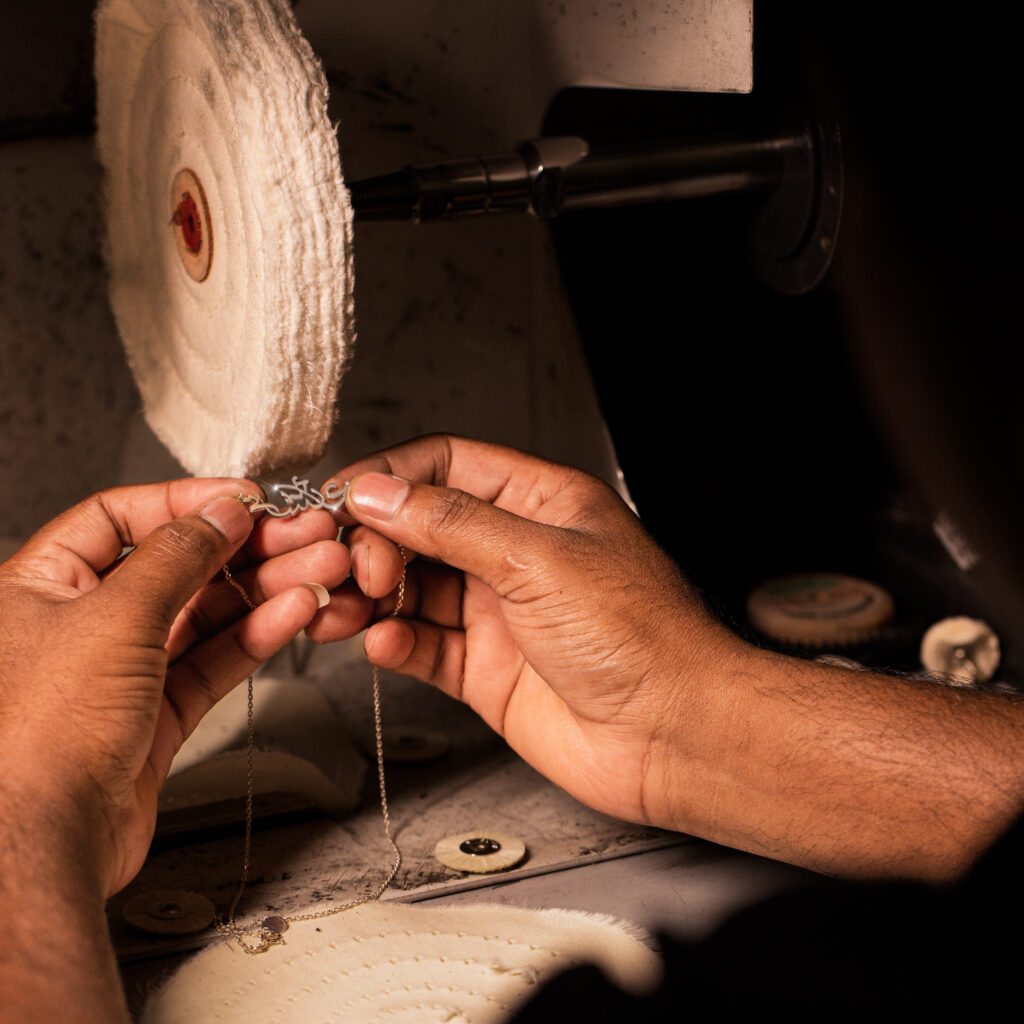Jewelry has always been more than just an accessory, it tells stories, symbolizes emotions, and reflects individuality. Unlike mass-produced pieces, items from a handmade jewelry store embody craftsmanship, authenticity, and artistic passion. In the case of Essmi Jewellery, the emphasis lies on the preservation of the fine art of jewellery-making and changing it with the modern tastes. But just what happens to jewelry in such a store? Let us consider how the idea for the final product is made.
1. Inspiration and Concept Development
All the manual jewelry pieces start with a thought. The inspiration can be drawn to nature, history, cultural elements or personal narratives as expressed by clients. Designers translate them into crude drawings and make sure that each detail is unique.
- Designers usually make mood boards as a guideline to the artistic theme.
- Design may be affected by requests of customers to make jewelry that is customized.
- In Essmi Jewellery, there is a mixed inspiration between tradition and the current trends.
2. Material Selection
Handmade jewelry is based on high quality materials. The selection of appropriate gemstones, metals and associated factors would make the final work durable and beautiful.
- Gold, silver, and platinum are precious metals that are well sourced.
- Gemstones are chosen on the basis of clarity, color and ethical sourcing.
- Recycling old metals is among the practices that are sustainable.
The choice of materials used ensures that the products are unique and they are different to those in the mass-market.
3. Designing and Prototyping
After picking up the materials, the design is then passed into the prototyping phase. Good artists can design elaborate patterns by hand or with computer-aid.
- Wax models are either sculpted or 3D models are made to visualize the piece.
- In custom orders, clients are able to look at prototypes.
- Modifications are done so that it is practical and comfortable to wear on a daily basis.
At this phase, the design is tested to be structurally sound to proceed into production.
4. Crafting by Hand
It is here that artistry really comes to life. In contrast to mass production which is produced by machines, each handwork is sculpted, soldered and polished.
- The base structure is made by melting, molding, and hammering metals.
- It may be done with engraving, wire wrapping or filigree.
- Detailing is done to be sure that all curves and edges are immaculate.
The period taken on this step reflects the enthusiasm and effort of talented craftsmen.
5. Stone Setting
The gemstones bring glamour and masculine touch to the handmade jewels. The setting process is very critical to ensure that the stones are not damaged in the process of securing them.
- Setting Prong, bezel or pave settings are determined by design.
- Hand-setting allows more control of symmetry and alignment.
- It is also checked by artisans to ensure that it fits well, so that it will not loosen in the future.
This measure increases beauty and longevity.
6. Polishing and Finishing
Polishing is the last step that gives the jewelry its lustre after crafting and setting. Completing also entails rectifying any flaws.
- Items are either hand-polished or polished with minor hand tools to become shiny.
- Matte, hammered, or high-gloss surface finishes are used.
- Jewelry is tested on the quality of durability and craftsmanship.
The finishing process makes the jewelry set to be treasured over the years.
7. Personalization and Customization
It is also usual to find personalization in a handmade jewelry store and each jewel has more significance.
- Initials, dates, or symbols that are engraved are sentimental.
- Customers are able to seek gemstone options or design customization.
- Exceptional styles are not copied in large numbers and are maintained as a single piece.
The level of emotional relation between jewelry and the wearer is enhanced through customization.
8. Ethical and Sustainable Practices
The current consumer appreciates sustainability, and handcrafted jewelry outlets tend to focus on ethics.
- Recycling of metals reduces the effects on the environment.
- The fair-trade gemstones make sure that the artisans and miners are treated well.
- Fashionable designs can be long-lived and eliminate the necessity of quick fashion.
These values are impressed into the making process at Essmi Jewellery which makes beauty responsible.
9. Why Handmade Jewelry Stands Out
The art of jewelry is not merely a beauty, but it has an intangible value.
- There is a human story behind every work.
- The quality inspection is more thorough than at mass production.
- The designs are unique with each client having uniqueness.
This distinctiveness is what makes the decision of investing in handmade jewelry a rewarding one.
Conclusion
Creating jewelry in a crafted jewelry company is an art, craft and a feeling. Inspiration to the last polish, it all takes a lot of attention and care. Essmi Jewellery also keeps the tradition of craftsmanship and adopts the spirit of modern design. To the customers, every item is not an accessory, but rather a treasure of eternity that is passionate, full of heritage, and unique.
FAQs
1. How long does it take to craft handmade jewelry?
Complexity has an influence on time. Basic patterns can be completed in a few days and more sophisticated patterns that have many gemstones can take weeks.
2. Is handmade jewelry more durable than machine-made pieces?
Yes. Handmade jewelry undergoes careful crafting and inspection, often resulting in stronger, more durable designs compared to mass-produced alternatives.
3. Can I request a custom design at Essmi Jewellery?
Absolutely. Essmi Jewellery is focused on custom-made designs, which gives customers access to materials, gemstones, and engravings to make a unique product.

